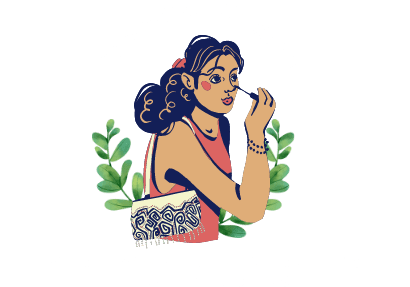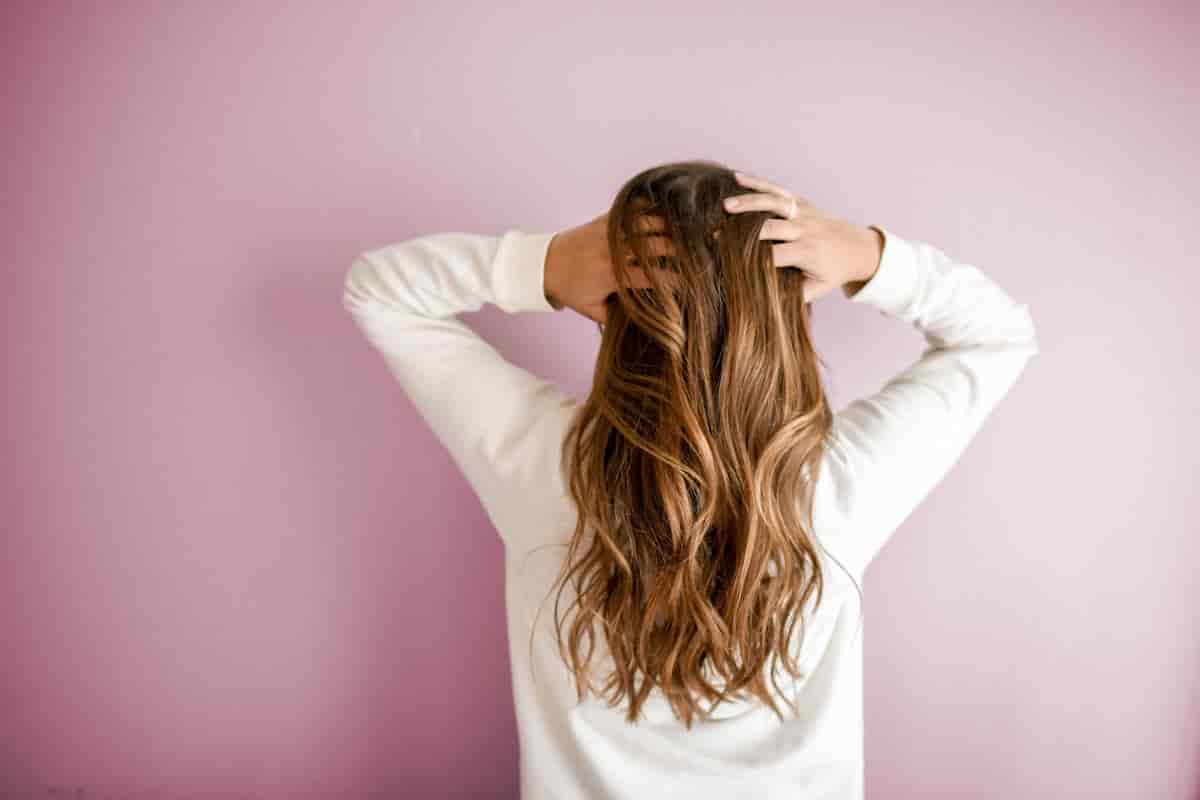Here is your complete guide to curly vs wavy hair.
Introduction to Curly vs Wavy Hair
If you’ve ever stood in front of the mirror wondering “Is my hair curly or wavy?”, you are not alone. The distinction between curly vs wavy hair can sometimes be confusing, yet knowing your exact hair type is essential for the right care and styling. This detailed guide will help you unravel the mystery by highlighting the key differences, characteristics, science, and care routines of both hair types, complete with practical tips and FAQs.
The topic of curly vs wavy hair is not just a conversation about aesthetics—it’s about understanding your hair’s unique texture, care needs, and styling potential. Many people mistakenly use the terms interchangeably, but these hair types have distinct characteristics that influence how they respond to products, styling techniques, and environmental factors.
In this article, we will explore the fundamental differences between curly vs wavy hair, their physical and structural traits, care and maintenance routines, and common myths. With this knowledge, you can embrace your natural texture confidently and learn how to nurture your hair for the healthiest, most beautiful results.
Understanding Hair Types: Curly vs Wavy Hair
Curly and wavy hair fall on a spectrum of hair textures that ranges from straight to coily. To truly grasp curly vs wavy hair, it helps to know the official hair typing system:
| Hair Type | Pattern Shape | Typical Texture | Porosity Tendencies | Curl Tightness |
|---|---|---|---|---|
| 2A (Wavy) | Loose S-shape | Fine, smooth | Often low porosity | Very loose waves |
| 2B (Wavy) | Defined S-shape | Medium texture | Medium porosity | More defined waves |
| 2C (Wavy) | Thick S-shape | Coarser texture | Medium/high porosity | Heavier waves starting at roots |
| 3A (Curly) | Loose spiral | Soft, springy | Medium porosity | Loose curls |
| 3B (Curly) | Tight spiral | Dense, bouncy | Medium/high porosity | Tight curls |
| 3C (Curly) | Corkscrew | Thick, voluminous | High porosity | Very tight curls |
Key Takeaway:
- Curly hair forms a 360-degree spiral or tight coils starting near the roots.
- Wavy hair shows an S-shaped wave that is looser and less defined, usually starting lower down the hair strand.
Physical Characteristics: Curly vs Wavy Hair
The physical structure of a hair strand and follicle contributes significantly to how hair behaves.
| Feature | Curly Hair | Wavy Hair |
|---|---|---|
| Curl Pattern | Full 360-degree spiral | S-shaped wave |
| Strand Thickness | Medium to thick/coarse | Fine to medium |
| Porosity | Medium to high | Often low to medium |
| Oiliness | Prone to dryness | Retains natural oils more easily |
| Shrinkage | Significant (can appear shorter) | Less noticeable |
| Bounce | High, springy | Loose, flowing |
Additional Notes: Curly vs Wavy Hair
- Follicle Shape: Curly hair grows from a flat, oval-shaped follicle, which causes it to spiral tightly. Wavy hair grows from a disk-shaped follicle, producing the characteristic ‘S’ pattern.
- Texture and Thickness: Curly hair is often thicker and coarser with more volume, while wavy hair tends to be smoother and finer.
- Movement: Curly hair has a springy bounce; wavy hair flows in loose undulations.
- Porosity & Moisture: Curly hair generally has higher porosity, making it more prone to dryness. Wavy hair tends to retain more natural oils, making it easier to manage moisture.
Causes and Science Behind Curly vs Wavy Hair
The curl pattern mainly depends on two biological factors:
- Hair Follicle Shape: The more oval or flat the follicle, the curlier the hair. Round follicles typically produce straighter hair.
- Chemical Bonds Inside Hair: Hair strands are made up of keratin proteins linked by covalent bonds (disulfide and hydrogen bonds). The arrangement of these bonds influences how hair curls or waves.
Genetics and Environmental Influence
- Hair texture is largely inherited and may vary among ethnic groups.
- Environmental factors like humidity and hair damage (e.g., heat styling) can alter the curl pattern. For example, wavy hair can sometimes become curlier due to damage or moisture exposure.
Care and Maintenance Differences: Curly vs Wavy Hair
Proper care tailored to your hair type is crucial for healthy, defined waves or curls.
| Care Aspect | Curly Hair | Wavy Hair |
|---|---|---|
| Shampoo Type | Sulfate-free, moisturizing | Clarifying occasionally, lightweight |
| Conditioner | Deep conditioning weekly | Lighter conditioning |
| Detangling | Wide-tooth comb post-condition | Fingers or wide-tooth comb |
| Styling Product | Creams and gels for hold | Mousse, light gel for definition |
| Drying Method | Diffusing or air drying preferred | Air drying or gentle blow-dry |
| Frequency Washing | Less often to retain moisture | More regular due to natural oiliness |
Tips for Curly Hair Care
- Curly hair tends to be drier and more fragile due to its structure.
- Use rich, hydrating products like leave-in conditioners and curl creams.
- Detangle gently when hair is wet and conditioned to avoid breakage.
- Avoid harsh shampoos containing sulfates that strip moisture.
- Use a diffuser or air dry to preserve curl shape and reduce frizz.
- Regular deep conditioning masks help combat dryness.
Tips for Wavy Hair Care
- Wavy hair can get weighed down easily by heavy products; lightweight formulas work best.
- Clarifying shampoos can help prevent oil buildup.
- Light mousses or sprays enhance waves without stiffness.
- Avoid over-washing to prevent scalp oiliness but maintain freshness as needed.
- Air drying is ideal; low heat can be used sparingly.
Styling Tips: Curly vs Wavy Hair
Styling strategies differ for curly vs wavy hair based on structure and behavior.
| Styling Technique | Best for Curly Hair | Best for Wavy Hair |
|---|---|---|
| Plopping | Yes | Sometimes |
| Scrunching | Yes | Yes |
| Finger Coiling | Yes | No |
| Sea Salt Spray | Sometimes | Yes |
| Diffuser Drying | Yes | Yes |
| Curling Iron Touch-up | Less often | More often |
| Haircuts | Layered for bounce | Long with texture |
Curly Hair Styling:
- Use scrunching and finger coiling to enhance curl definition.
- Plopping (wrapping hair in a microfiber towel) helps curls set without frizz.
- Avoid heavy heat styling to protect hair integrity.
- Layers add bounce and reduce bulk.
Wavy Hair Styling:
- Sea salt sprays add texture and volume.
- Light mousses boost wave shape without weighing hair down.
- Curling irons can add curl definition to wavy hair when desired.
- Longer, textured cuts maintain natural wave flow.
Best Hair Colors for Curly vs Wavy Hair
Choosing the right hair color enhances the natural beauty of curly and wavy hair, highlighting texture, depth, and movement. The table below compares the most flattering color techniques and shades for each hair type, focusing on how color interacts with curl/wave definition and maintenance needs.
| Aspect | Curly Hair | Wavy Hair |
|---|---|---|
| Best Overall Shades | Warm browns, rich coppers, vibrant reds, toffee, caramel highlights, deep chocolate, honey | Ashy blondes, sandy browns, bronde, golden highlights, pastel ombré, cool espresso |
| What Flatters Most | Multi-dimensional or blended shades to show off curls; avoids flat, single-process color | Balayage or soft highlights to create depth; brighter ends accentuate the wave |
| Techniques | Balayage, ombré, color melting, root shadowing for movement and curl exposure | Soft balayage, babylights, ombré or subtle dip-dye for natural flow |
| Avoid | Monotone black or platinum (can mask definition), blocky color | Heavy lowlights (can look heavy), harsh demarcations, single-process for all-over lightening |
| Highlights | Caramel, honey, golden, copper highlights work well to break up curls and boost shine | Ash blonde, sun-kissed highlights, face-framing lights for extra texture |
| Low Maintenance Picks | Subtle balayage/rooted colors hide regrowth in curls’ volume | Grown-out balayage or soft ombré allow waves to blend seamlessly as hair grows |
| Face-Framing Choices | Lighter pieces around the face (money pieces), warm or golden tones for instant radiance | Delicate face-framing balayage; cooler or lighter tones softly brighten without overpowering |
Tips:
- Curly hair looks best with rich, multi-tonal shades that catch the light between coils.
- Wavy hair shines with airy, sunlit effects and softly-blended transitions.
- Both hair types benefit from professional colorists who understand texture’s unique needs.
Common Myths and Misconceptions About Curly vs Wavy Hair
- Myth: Wavy hair is just curly hair that is “not fully curly” — Fact: Wavy hair is a distinct texture with a looser pattern.
- Myth: Curly hair is always dry and frizzy — Fact: Proper care can make curly hair soft and shiny.
- Myth: Wavy hair isn’t “real” textured hair — Fact: Wavy hair is a natural and beautiful texture on its own.
- Myth: You can treat all textured hair the same — Fact: Products and routines should match hair type for best results.
Frequently Asked Questions About Curly vs Wavy Hair
What is the main difference between curly and wavy hair?
Curly hair forms tight spirals with a 360-degree twist, whereas wavy hair creates loose ‘S’ shaped waves without a full coil.
Can wavy hair become curly?
Yes, wavy hair can sometimes appear curlier due to damage, humidity, or specific hair care routines.
Read Also: DIY Lip Filler Injections.
How do you know if your hair is curly or wavy?
Check your hair’s natural pattern. If it makes spirals or coils, it’s curly. If it forms loose waves without full coils, it’s wavy.
Read Also: Is Shea Butter Smell for Summer or Winter?
Is curly hair healthier than wavy hair?
Neither is inherently healthier; hair health depends on care. Curly hair needs more moisture; wavy hair needs balanced hydration.
Read Also: Best Creams for Handjobs.
How to care for curly vs wavy hair differently?
Curly hair benefits from deep hydration and gentle detangling, while wavy hair thrives with lighter products and occasional clarifying.
Read Also: Aloe Facial Cleansing Foam.
Can curly and wavy hair be styled the same way?
A: Some techniques overlap, but curly hair often requires more definition techniques like finger coiling.
Read Also: Shea Butter Hair Cream.
What products work best for curly vs wavy hair?
A: Curly hair responds well to creams and gels; wavy hair prefers light mousses and sea salt sprays.
Read Also: Aloe Vera Spray for Hair.
How to prevent frizz in curly and wavy hair?
Use moisturizing, anti-frizz products, avoid harsh brushing, and dry hair gently.
Read Also: Coco Butter Around Eyes.
Conclusion
Understanding curly vs wavy hair is the first step to embracing and properly caring for your natural texture. Each hair type has unique features and care needs that, when met, unlock their true beauty. With tailored routines, the right products, and styling techniques, you can enjoy luscious curls or waves that look and feel their best every day. Celebrate your hair’s natural form—whether it spirals or flows in waves—and let your texture shine.
Read Also: Is Shea Moisture Good for Curly Hair?
References and Resources Used in This Article:
- The what, why and how of curly hair: a review – PMC.
- Wavy vs. Curly Hair: What’s the Difference? – CurlsBot.
- Types and characteristics of hair across different countries: results – DovePress.
- Types and Characteristics of Hair Across the Globe – PMC.
- Friction Dynamics of Straight, Curly, and Wavy Hair – J-Stage.
- Reimagining Hair Science: A New Approach to Classify Curly Hair – ACS Publications.
- Changing human hair fibre colour and shape from the follicle – ScienceDirect.

